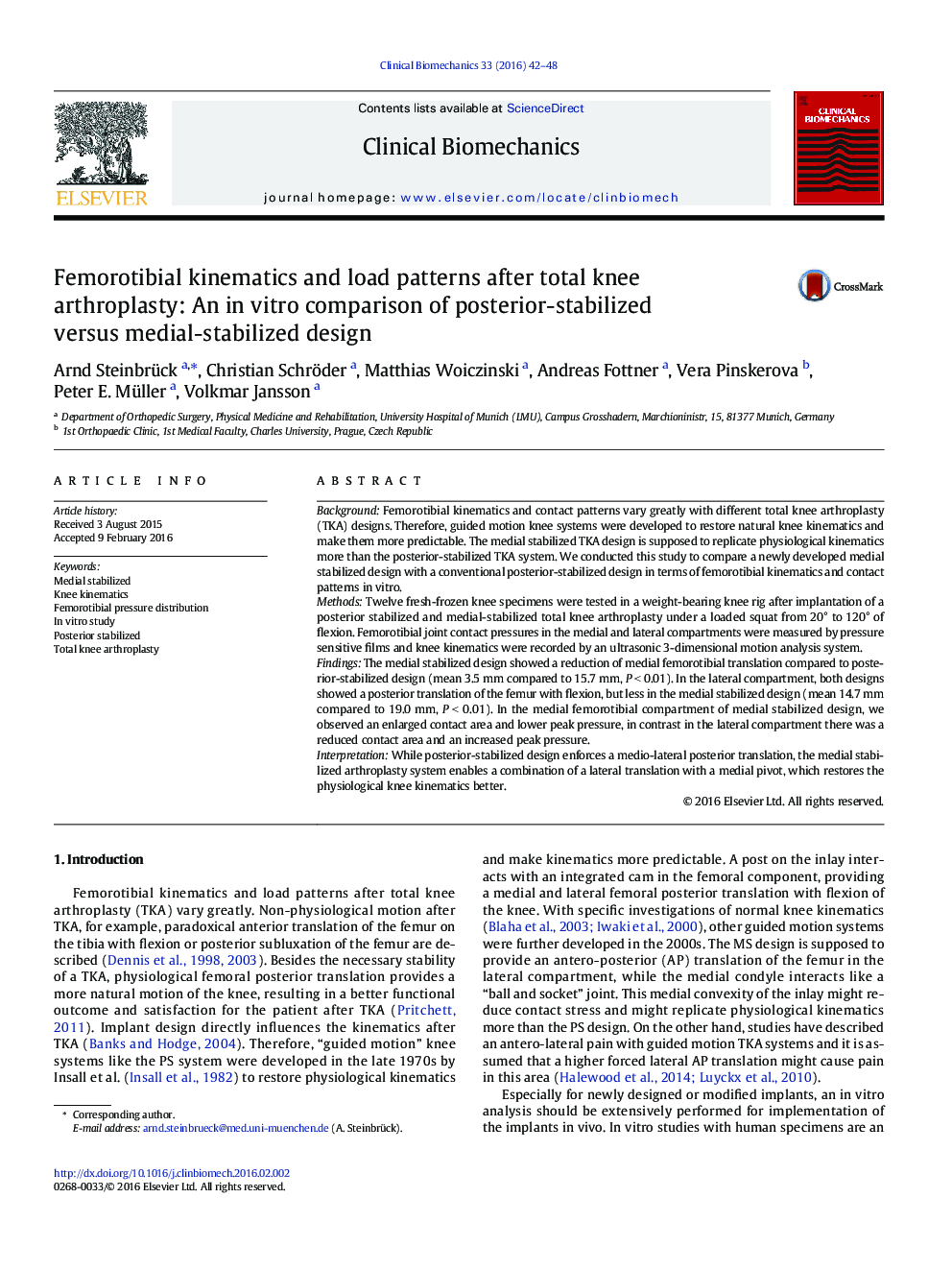| کد مقاله | کد نشریه | سال انتشار | مقاله انگلیسی | نسخه تمام متن |
|---|---|---|---|---|
| 4050130 | 1603745 | 2016 | 7 صفحه PDF | دانلود رایگان |
• A medial and posterior-stabilized total knee arthroplasty design was tested in a rig.
• Medial stabilized system had a reduced rollback in the lateral compartment with flexion.
• The medial stabilized system enables a lateral translation with a medial pivot.
BackgroundFemorotibial kinematics and contact patterns vary greatly with different total knee arthroplasty (TKA) designs. Therefore, guided motion knee systems were developed to restore natural knee kinematics and make them more predictable. The medial stabilized TKA design is supposed to replicate physiological kinematics more than the posterior-stabilized TKA system. We conducted this study to compare a newly developed medial stabilized design with a conventional posterior-stabilized design in terms of femorotibial kinematics and contact patterns in vitro.MethodsTwelve fresh-frozen knee specimens were tested in a weight-bearing knee rig after implantation of a posterior stabilized and medial-stabilized total knee arthroplasty under a loaded squat from 20° to 120° of flexion. Femorotibial joint contact pressures in the medial and lateral compartments were measured by pressure sensitive films and knee kinematics were recorded by an ultrasonic 3-dimensional motion analysis system.FindingsThe medial stabilized design showed a reduction of medial femorotibial translation compared to posterior-stabilized design (mean 3.5 mm compared to 15.7 mm, P < 0.01). In the lateral compartment, both designs showed a posterior translation of the femur with flexion, but less in the medial stabilized design (mean 14.7 mm compared to 19.0 mm, P < 0.01). In the medial femorotibial compartment of medial stabilized design, we observed an enlarged contact area and lower peak pressure, in contrast in the lateral compartment there was a reduced contact area and an increased peak pressure.InterpretationWhile posterior-stabilized design enforces a medio-lateral posterior translation, the medial stabilized arthroplasty system enables a combination of a lateral translation with a medial pivot, which restores the physiological knee kinematics better.
Journal: Clinical Biomechanics - Volume 33, March 2016, Pages 42–48
